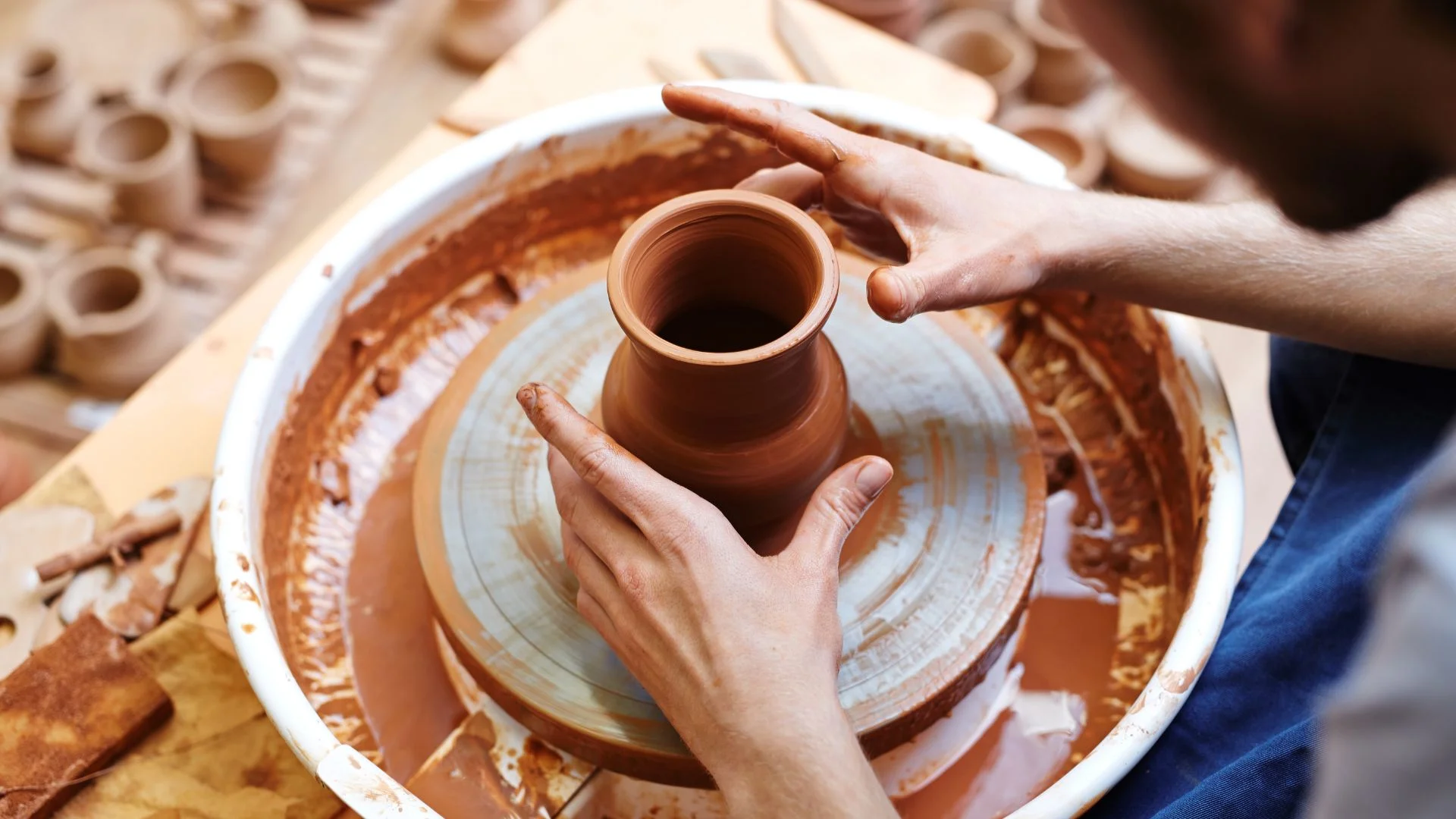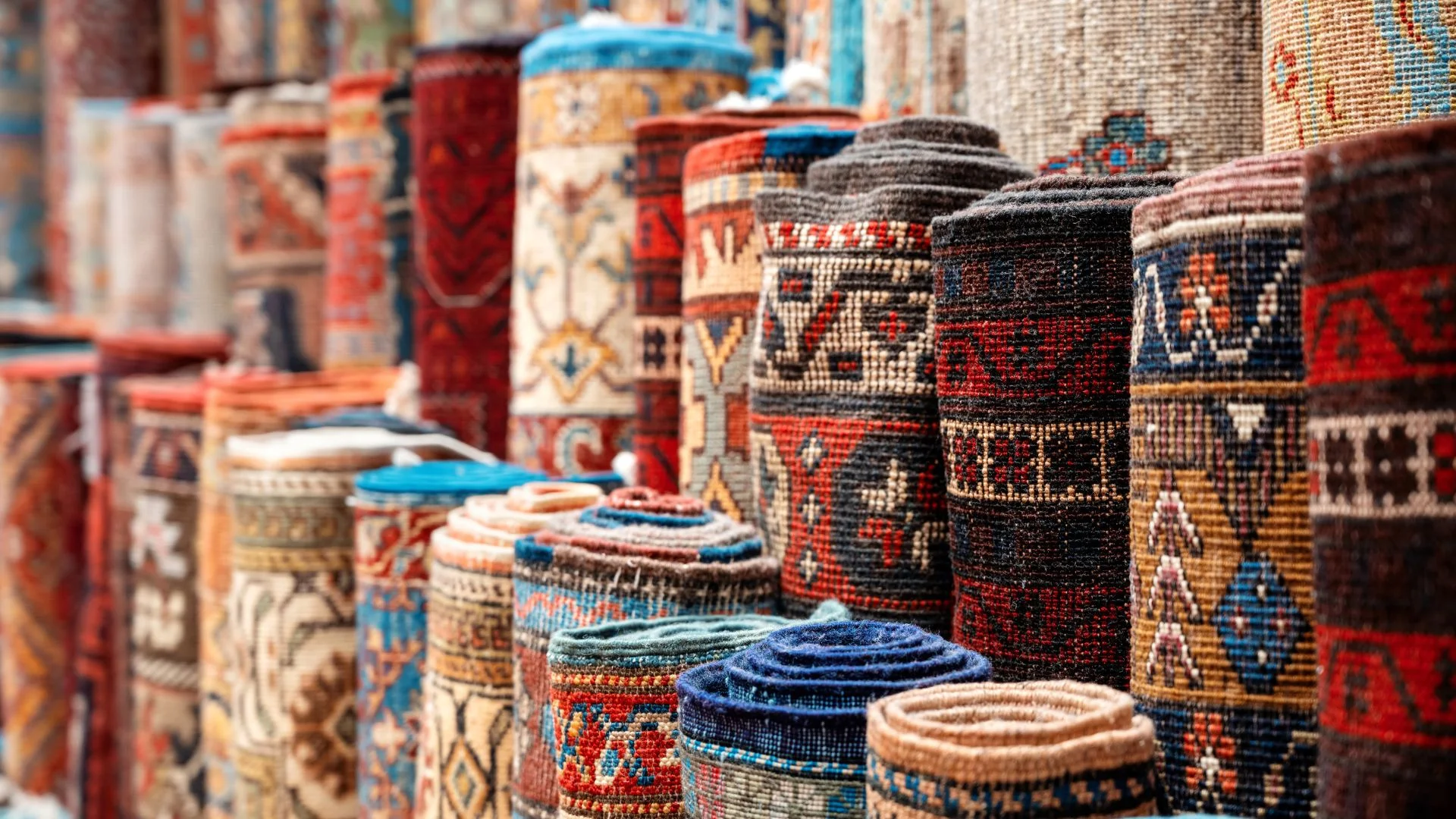

Handicrafts and artisan skills form the heart of cultural heritage, showcasing the creativity, traditions, and history passed through generations. Among these revered crafts are pottery, weaving, and silverwork, each with distinct techniques and cultural significance. This blog dives deep into the history, methods, and cultural importance of pottery, weaving, and silverwork, exploring how these handicrafts remain relevant today.
Pottery, one of the oldest handicrafts, dates back to 10,000 BCE, originating during the Neolithic era. Early pottery served as vessels for cooking, storage, and rituals. Over time, it evolved into an artistic expression, with artisans developing intricate designs and sophisticated techniques. Pottery symbolised culture and identity, especially in ancient civilizations like Mesopotamia, Egypt, and China. The glazes and decorative techniques pioneered in these regions continue to influence modern ceramics, stoneware, and porcelain.
Pottery techniques have evolved, but several fundamental methods remain key across cultures. These include:
Distinct pottery styles reflect regional influences and cultural traditions. Examples include:
Pottery is more than a functional craft; it’s a cultural artefact. For instance, Native American pottery is decorated with symbolic motifs, while in Japan, pottery is integral to tea ceremonies. Today, pottery continues to thrive as artisans blend tradition with contemporary designs. Handmade crafts like ceramics have seen a resurgence due to a growing appreciation for craftsmanship.
Weaving dates back to 5000 BCE and was initially developed as a way to create textiles for clothing, shelter, and trade. Over time, weaving became a form of artistic expression. Different cultures, from ancient Egypt to the Andes, contributed to the rich diversity of weaving styles. Each culture developed distinct weaving methods, from the simplest plain weave to more complex techniques like ikat and tapestry.
Weaving involves interlacing warp and weft threads to create fabric. Key techniques include:
Cultural influences in weaving are significant. From Navajo weaving to Andean textiles, the art has deep symbolic meaning. Macramé and embroidery add further depth to this ancient craft, reflecting artisans’ creative expression.
Weaving is not just an art form but also a representation of identity and social status. In African societies, Kente cloth serves as a symbol of history and philosophy. Weaving also provides economic empowerment, particularly in regions like South America, where traditional textiles are sold at artisan fairs and online craft marketplaces.
Silver work is one of the most cherished forms of craftsmanship, with roots dating back to ancient Egypt and Mesopotamia. Silver has long been valued for its beauty and versatility. Throughout history, artisans have used silver to create everything from jewellery to ceremonial objects. The craft spread globally, with each region developing unique styles and techniques in silversmithing, jewellery making, and engraving.
Silver work demands both creativity and precision. Common techniques include:
🟥Hammering: Creating thin sheets and patterns by striking silver with a hammer.
🟥Casting: Pouring molten silver into moulds to shape it.
🟥Filigree: Soldering thin wires into delicate lace-like designs, often used in intricate jewellery.
🟥Inlaying: Embedding materials like gemstones into silver to create striking contrasts.
These methods are still practiced today, with artisans incorporating modern designs to appeal to contemporary tastes.

Silver has symbolic value in many cultures. In India, it’s seen as a symbol of purity and prosperity, often used in religious rituals. Middle Eastern and North African jewellery, crafted by skilled artisans, is thought to ward off evil spirits. Silver jewellery making continues to be a vital craft, often sold at craft shows and artisan fairs.
While industrialization and mass production have challenged traditional handicrafts, these crafts have experienced a revival. The global demand for handmade, sustainable products has increased, with markets expanding online and at craft shows. Artisans from all over the world are finding new ways to blend tradition with contemporary designs.
Various organizations and governments are working to preserve traditional pottery techniques. Museums showcase ancient and modern ceramics, and pottery cooperatives are helping artisans sustain their craft.
Weaving has experienced a resurgence, driven by interest in sustainable textiles. Cooperatives in countries like Guatemala empower women through traditional weaving, creating opportunities to showcase Andean textiles and other cultural fabrics in global markets.
Silver work continues to flourish, with regions like India and Mexico adapting traditional techniques to modern trends. The combination of tradition and innovation ensures these handicrafts remain relevant.
Handicrafts like pottery, weaving, and silver work are not just about artistic expression but a connection to history and cultural identity. These artisan skills have been passed down through generations, preserving traditions while evolving with the times. Today, the handmade crafts market celebrates these crafts, showcasing their enduring relevance.
By supporting these handicrafts, whether through artisan fairs or online craft marketplaces, we ensure that these ancient traditions continue to thrive. In a world increasingly dominated by mass production, handicrafts remind us of the value of time, skill, and creativity.
Never miss any important news. Subscribe to our newsletter.







